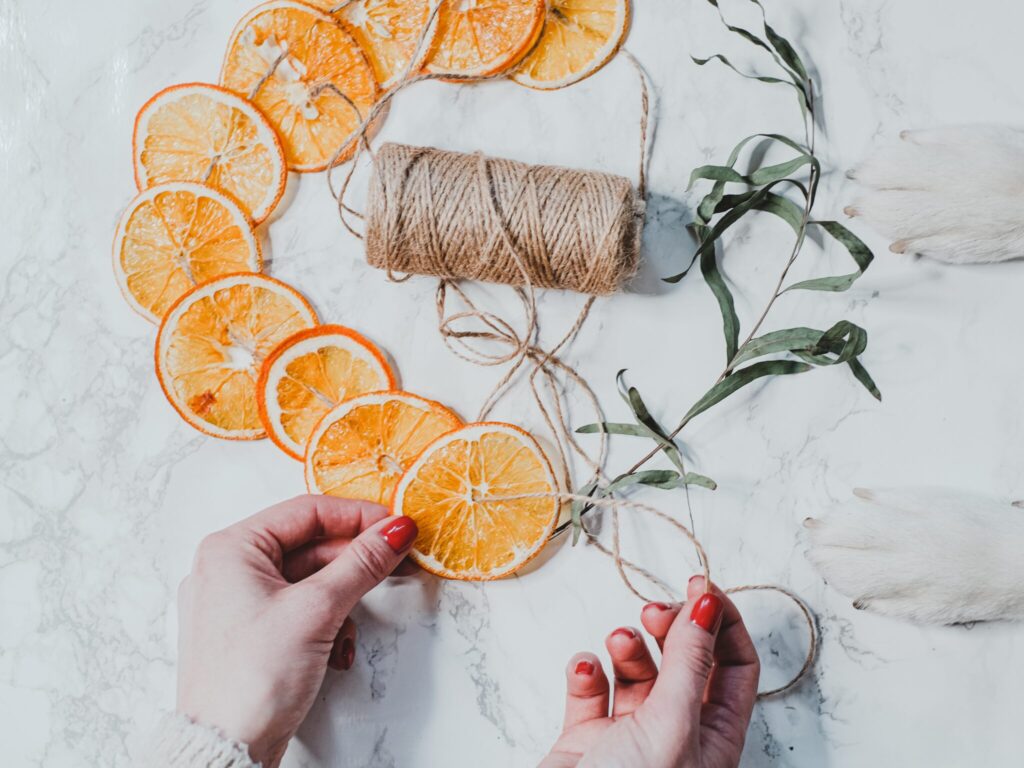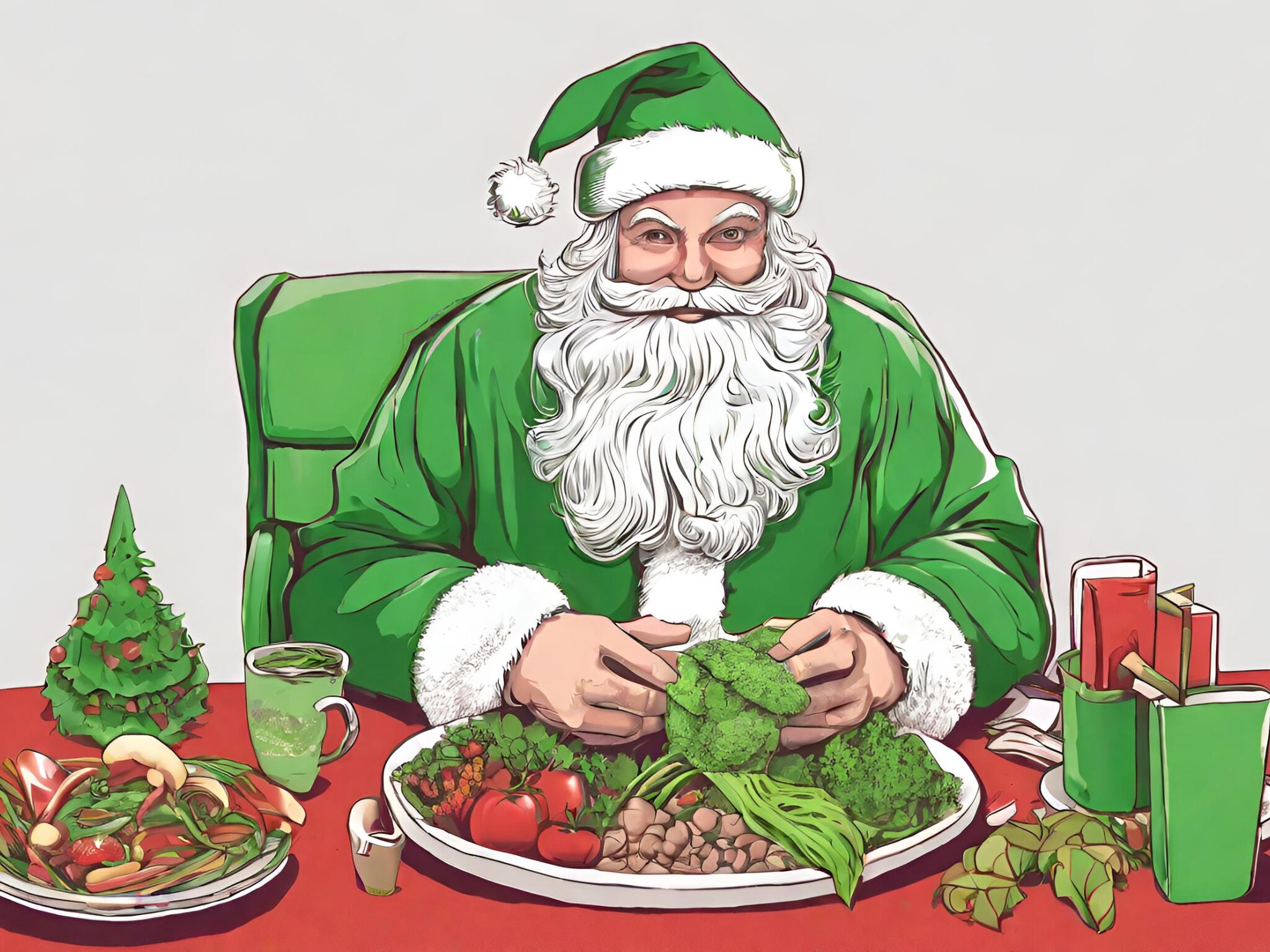12 Ways of Christmas: Holiday Rules for the Climate-Conscious
9 Mins Read
Christmas is one of the most joyful and wasteful days of the year – with lots of food and lots of waste producing stats that make for uncomfortable reading. Here’s how you can have a more eco-conscious holiday this year.
Over three days of Christmas festivities, our consumption habits lead to the emission of 650kg of carbon dioxide per person, which is the same weight as 1,000 Christmas puddings. More shockingly, that is 5.5% of a person’s entire annual carbon footprint – no amount of stockings or stuffing is worth that.
It’s a lot of people’s favourite week of the year, starting with Christmas and celebrations with loved ones, and ending with a reflection of the year gone by with the promise of an even better one next. But – at the risk of being a party pooper – if we continue the way we are, there may not be any better years to come.
To that effect, there are some changes we can make that will have a drastic impact on our consumption-based impact on the climate during Yuletide. To futureproof Christmas and our planet, here are some holiday rules.
1) Sustainable physical gifts
Quality over quantity is the name of the game here. Over 60% of Brits receive at least one unwanted gift on Christmas, while 57% of Americans regift or donate presents they never wished for in the first place.
Avoid buying things that won’t get used – one way to do that is to simply ask the recipient what they’d like, and get a well-made, ethical product that will last long and can be passed on to friends, families or charity. You could also look for recycled, refurbished or preloved items, and when it comes to electric equipment, finding an energy-efficient option is the way to go.

2) Better wrapping solutions
Wrapping paper creates mind-bending amounts of waste. Greenpeace estimates that 1kg of wrapping paper contributes to over 3kg of CO2 emissions mainly due to the coal needed for production, while the amount of wrapping paper thrown away in the UK is long enough to reach the moon.
Consider reusing scrap paper from old magazines or newspapers lying around (which are destined for the bin otherwise). But even better, you could get reusable gift wraps – in the form of old fabrics, boxes, etc. – and tie them with a string instead of plastic tape. If you do get paper wrap, buy recycled and recyclable (or biodegradable if you can), and reuse for future use if you can.
If you’re like me and just can’t wrap to save your life, maybe just eschew the wrapping paper altogether – it’s the thought that counts, after all!
3) Virtual presents and donations
A more climate-conscious solution for gifts and wrappers is to avoid physical presents. Think of alternative gifts, like an experience you could spend together. This also tends to look and be more thoughtful and stands out from other gifts. Plus, it helps sidestep the extra transportation emissions produced by shipping these products.
Moreover, if the recipient feels passionate about a particular cause, consider gifting a donation to a charity of their choice. They might not really need a physical gift on Christmas, but you could help someone who could do with some kindness and help.
4) Say no to plastic
The UK’s plastic packaging amounts to 125,000 tonnes during the holiday period, with over 91% of it (114,000 tonnes) going to landfill instead of being recycled. In terms of weight, the total plastic waste is as heavy as five Statues of Liberty.
So apart from not using plastic gift wrap, reduce plastic wherever you can. Shop local and in zero-waste stores if you can to avoid packaging waste, use virtual Christmas cards, get crackers that only have jokes instead of the wasteful little gifts inside (and make sure to recycle the paper and packaging here), and get eco-friendly Christmas decorations.

5) Zero-waste decorations
Speaking of, 12,500 tonnes of Christmas decorations are destined for landfill each year in the UK, which includes nearly 70,000 miles of Christmas lights.
Only get decorations that you can reuse and/or repurpose for other settings, and avoid buying plastic if you can. DIY decorations can be a lot of fun and a good way to spend precious family time. You could dehydrate and reshape orange peels into stars for a compostable Christmas garland, make flowers from leftover tubes of empty toilet paper, or buy secondhand decorations from charity shops to reduce your consumption footprint.
6) Greener trees
An estimated 350 million Christmas trees are sold globally each year. But is it better to get a real one, or an artificial replica? It’s a tricky subject. Real Christmas trees take years to grow, and if they’re cultivated without fertilisers, that’s better than intensively grown variants. Buy local to avoid transport emissions and look for those certified by the Forest Stewardship Council.
An artificial Christmas tree that can be used over multiple years (at least five) is better than buying a new one each year, though there is the use of plastic or metal to contend with. Potted trees are very sustainable, as they can be reused each year, saving emissions from transportation and spreading the carbon footprint of buying them over several years.
What you definitely shouldn’t do is buy a new Christmas tree each year – that takes your climate impact through the roof.

7) Tackling tree disposal
Aside from the impact of growing trees, a bigger problem is how these are disposed of. The UK throws away eight million Christmas trees, generating 12,000 tonnes of waste. If a two-metre-high real Christmas tree ends up in a landfill, it has a carbon footprint of 16kg (while producing the much-more-potent methane too).
Again, replanting potted trees with roots is the best way to go about this, as it avoids disposal altogether. If you need to get rid of your tree, having it chipped and spread around the garden can cut the carbon footprint by up to 80%. But these trees can also help protect coastal areas by supporting sand dunes, turned into compost or recycled – or better yet – donated to local charities for reuse.
8) Lighter lighting
Depending on the type, incandescent light bulbs can use between 25 to 175 watts per strand. Christmas lights add a wonderful touch to the festivities, but they guzzle energy (and, subsequently, carbon and our money) – extravagant outdoor lighting can result in 500kg more carbon produced per household.
Instead, opt for LED light bulbs, which only use 5kg of carbon per household and last years on end. Using a low-energy light bulb for four hours daily can save 30kg of carbon per bulb annually, compared to a standard 100W one. And you could consider getting smaller solar-powered lights for your garden, instead of full-battery versions. And don’t forget to turn those fairy lights off before bedtime.

9) Travelling lighter
Christmastime always sees an influx of travellers and major crows at airports, railway stations and on the roads. But transportation has a huge impact on the environment, particularly due to its reliance on fossil fuels. So unless you have an electric car, this is something you might want to consider if you’re travelling around this period.
If you can, avoid air travel – especially domestically (as that is responsible for the highest share of transport emissions). Use public transport like trains if possible, and if you must use a car, see if you can share a ride with fellow travellers, as that will hugely reduce your pollution and your contribution to climate change.
10) Avoid food waste
In the UK alone, 54 million excess plates of food are thrown away on Christmas – that’s enough to feed dinner to 80% of the country’s population. And while the US already wastes about 30-40% of its food supply, the USDA predicts this goes up by 20% during the holidays.
It’s crucial to not waste food at all – let alone during Christmas. While it’s easy to go overboard with the festive spirit, buy and make only as much food as you need: if you do need a lot of variety, make smaller quantities and plan your menu so you can use your ingredients in multiple dishes. If you have food left over, repurpose it into new dishes post-Christmas, or donate to people in need.
As for produce, you can get creative and use every part of the vegetable. Look for recipes that utilise scraps, and leave the peel on where you can. If you must throw something away, compost it.
11) Zero-waste cocktails

Brits drink 250 million pints of beer over the holiday period, while Americans drink 27% more during the festive season versus the rest of the year. That’s a lot of booze, but it’s also a lot of waste. There’s the packaging: in the US, 70% of wine bottles end up in landfill, while half of all alcohol containers are thrown away and not recycled in the UK. But then there’s the production aspect itself: a 500ml bottle of beer uses around 148 litres of water, while a single 125ml glass of wine needs 110 litres.
To drink more mindfully (for both you and the planet), choose sustainable spirits and/or those that come in recycled and recyclable packaging. Dispose of the leftover bottles and cans in a planet-friendly way. As for what you’re drinking, opt for zero-waste cocktails – we have a handy recipe guide for you here.
12) More mindful cooking practices
There are multiple things you can do to lower your cooking impact. For example, only pre-heat the oven for as long as it needs, and don’t leave it turned on after the food is done to keep it heated. You can consider steam-cooking vegetables like Brussels sprouts, broccoli, etc., as they can be prepared at the same time and end up using less energy.
Moreover, instead of serving people individually, let them help themselves to as much as they need – anything that’s on the plate that isn’t eaten usually goes in the bin, but you can avoid that altogether by only portioning out as much as you need.
Bonus: Make your Christmas dinner vegan

Perhaps the most impactful thing you can do on Christmas is change what’s on your plate. Meat is the standard centrepiece in a majority of households, with sides that include dairy and meat alongside vegetables, and desserts containing dairy too. But meat and dairy have a significantly higher impact on the planet than plant-based food – vegan diets can reduce emissions, water pollution and land use by 75%.
Green Queen partnered with climate data startup Calyx to measure the climate footprint of an average Christmas dinner, versus one with vegan alternatives. Across the board, the plant-based dishes had an equal or higher eco-score, especially with meat. A roast turkey with cranberry sauce had a score of D+, compared to a nut load with cranberry sauce, which had a B rating. Similarly, a roast ham with gravy had a D score, with a roasted butternut squash with mushroom gravy ranking much higher at A-.
There are legions of things you can do to have a more sustainable Christmas and celebrate it with as much merriment as usual – food, though, should be top of the list.



